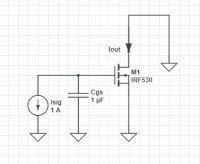promach
Advanced Member level 4

Why is Cgs / gm approximately equal to ωT = 2π*(fT) , where fT is the transition frequency ?
Extracted from page 193 of Razavi book "Design of Analog CMOS Integrated Circuits" 2nd edition
Extracted from page 193 of Razavi book "Design of Analog CMOS Integrated Circuits" 2nd edition



